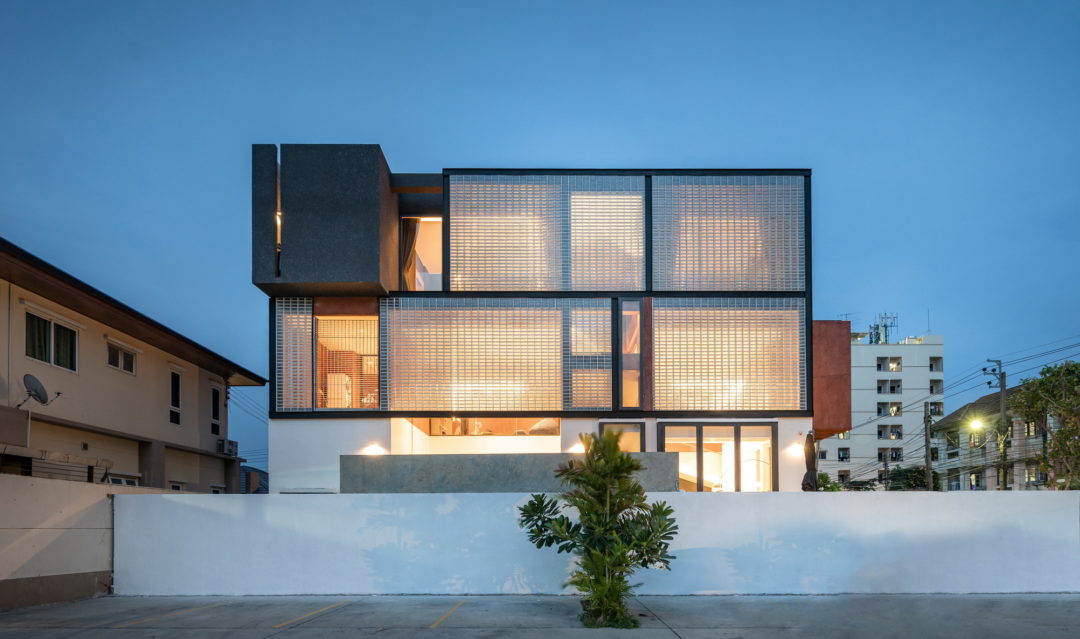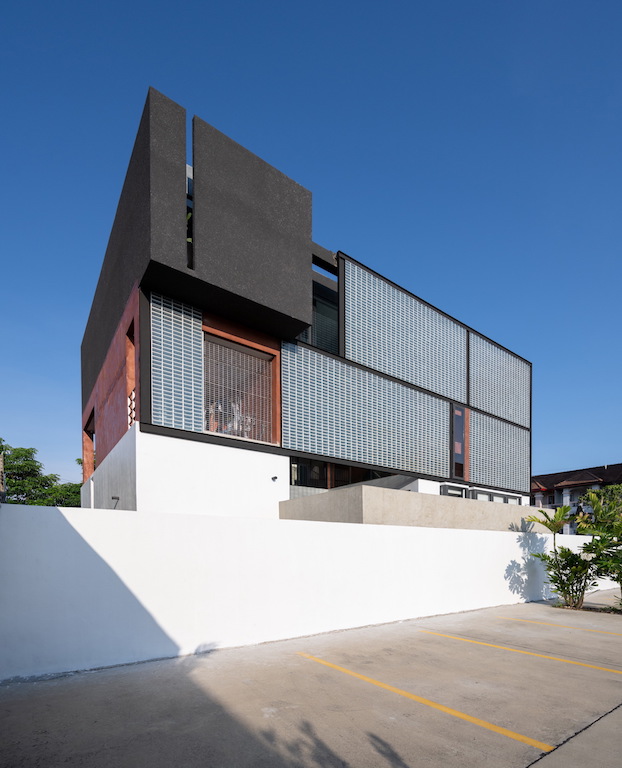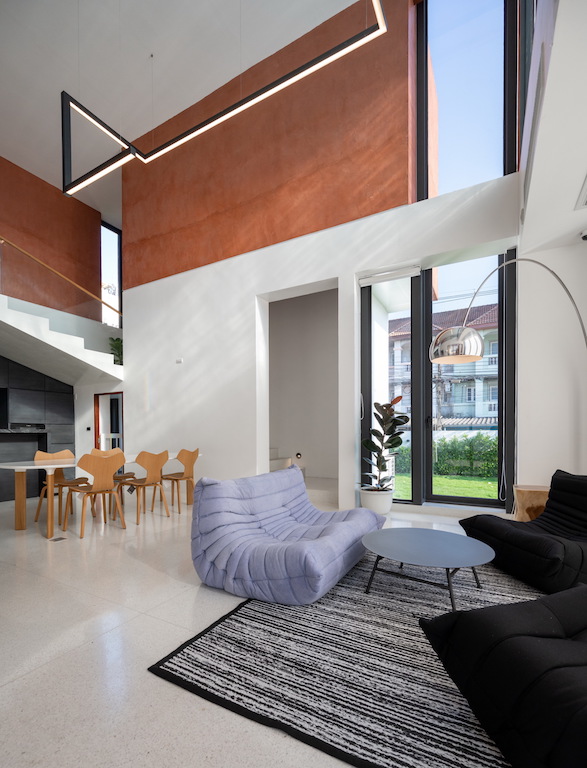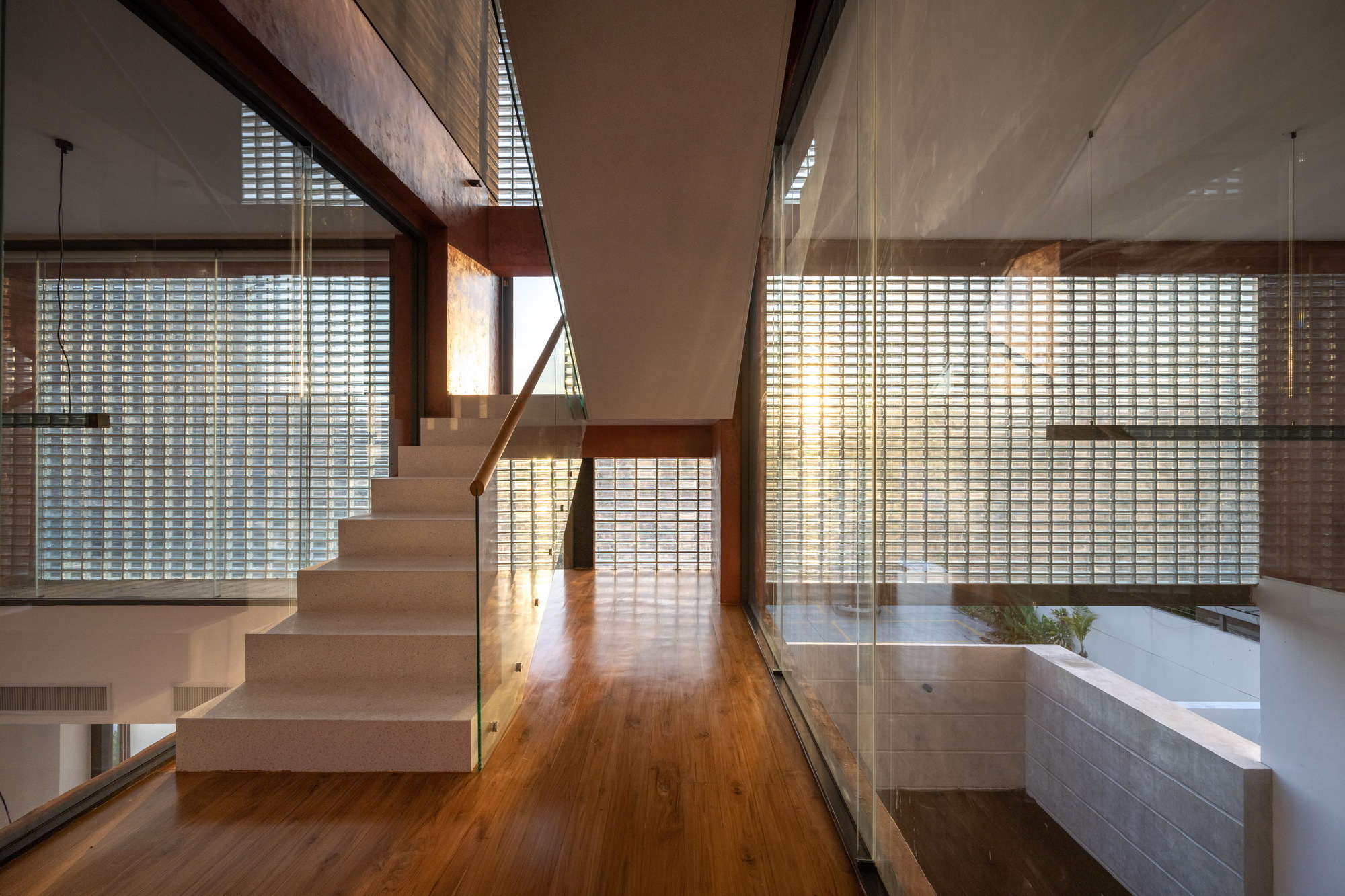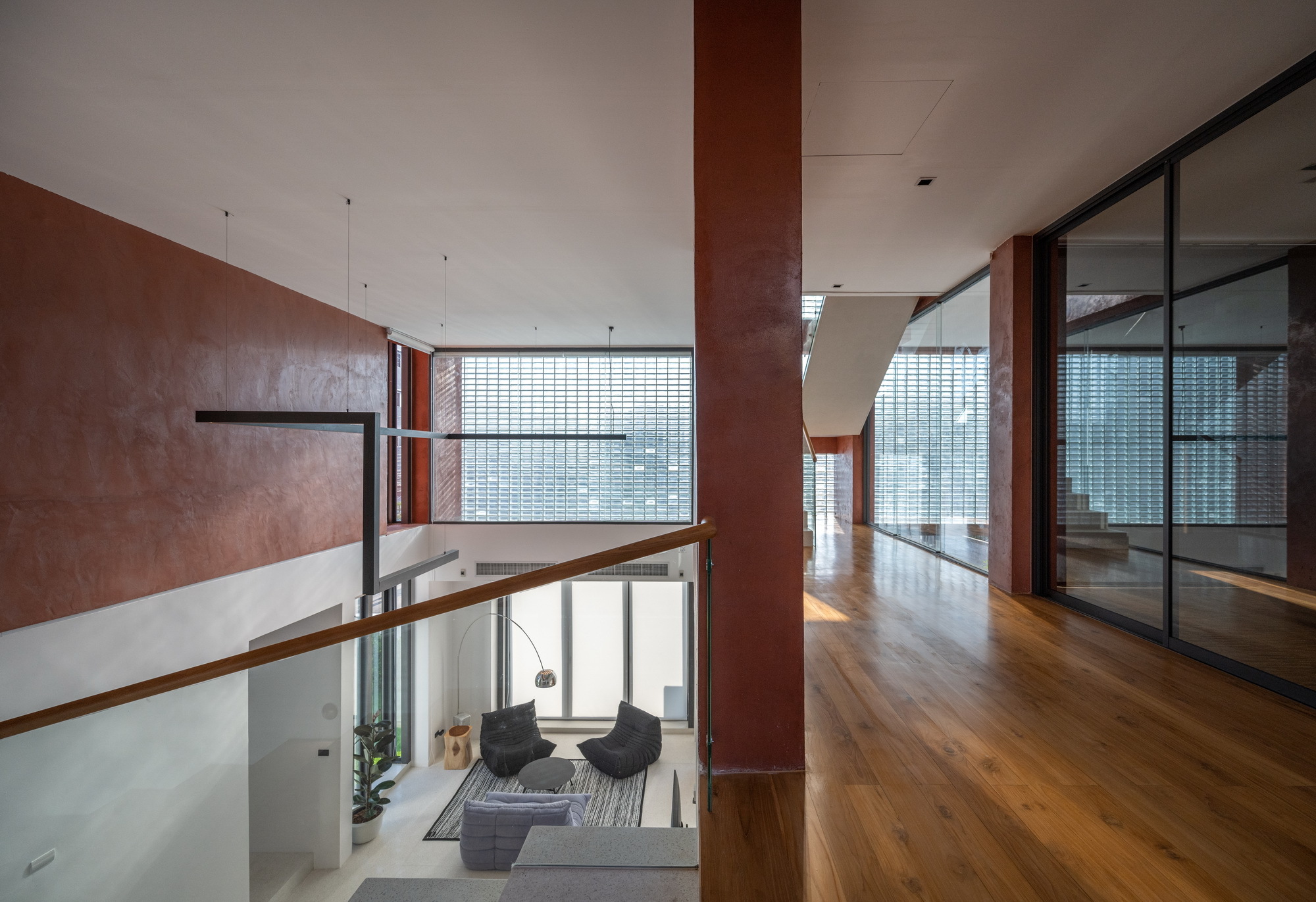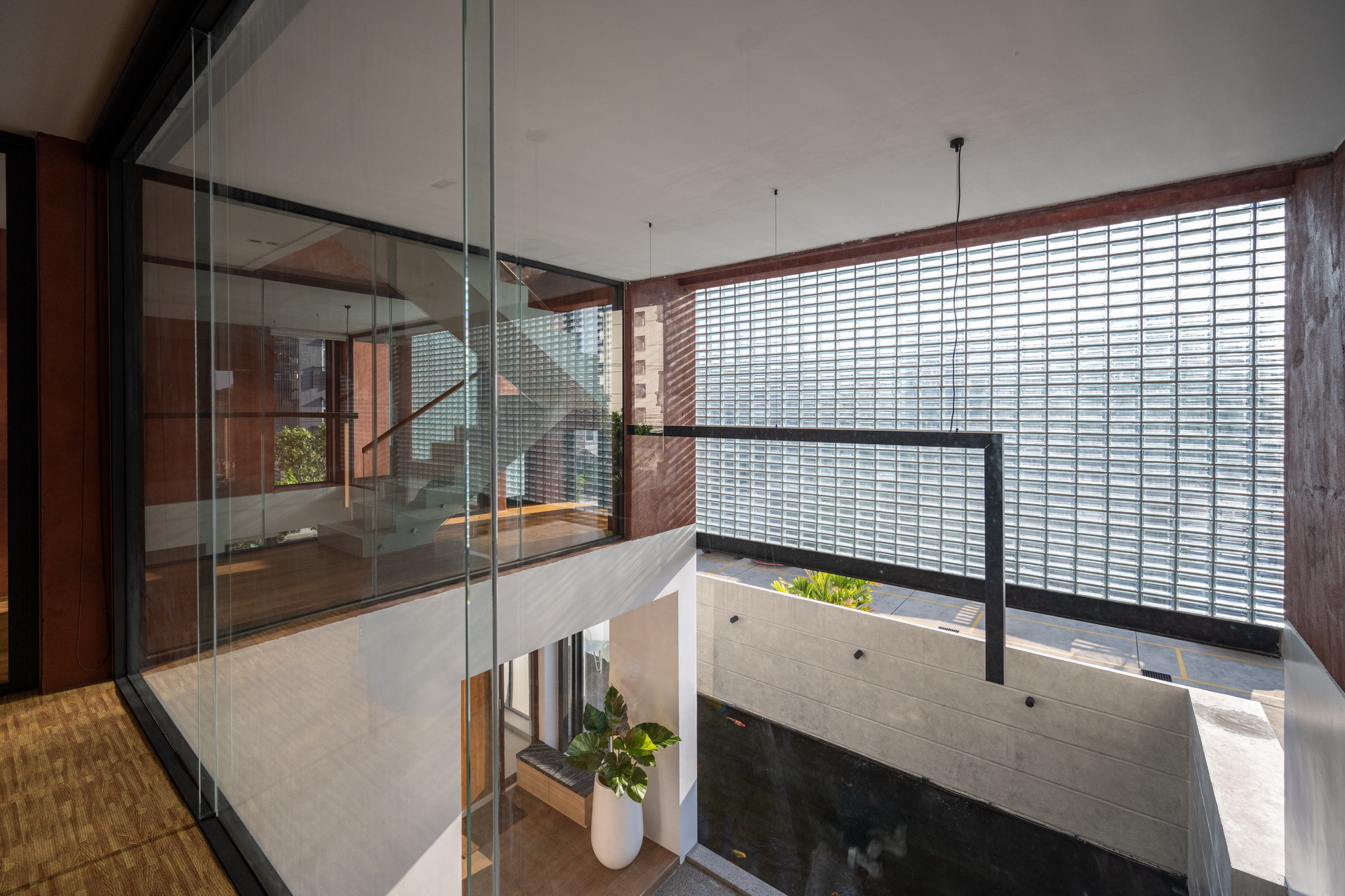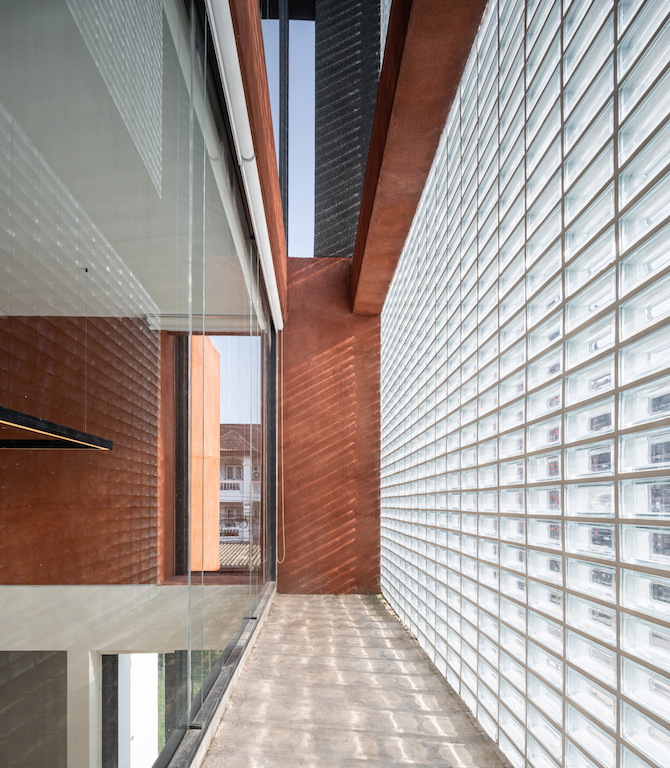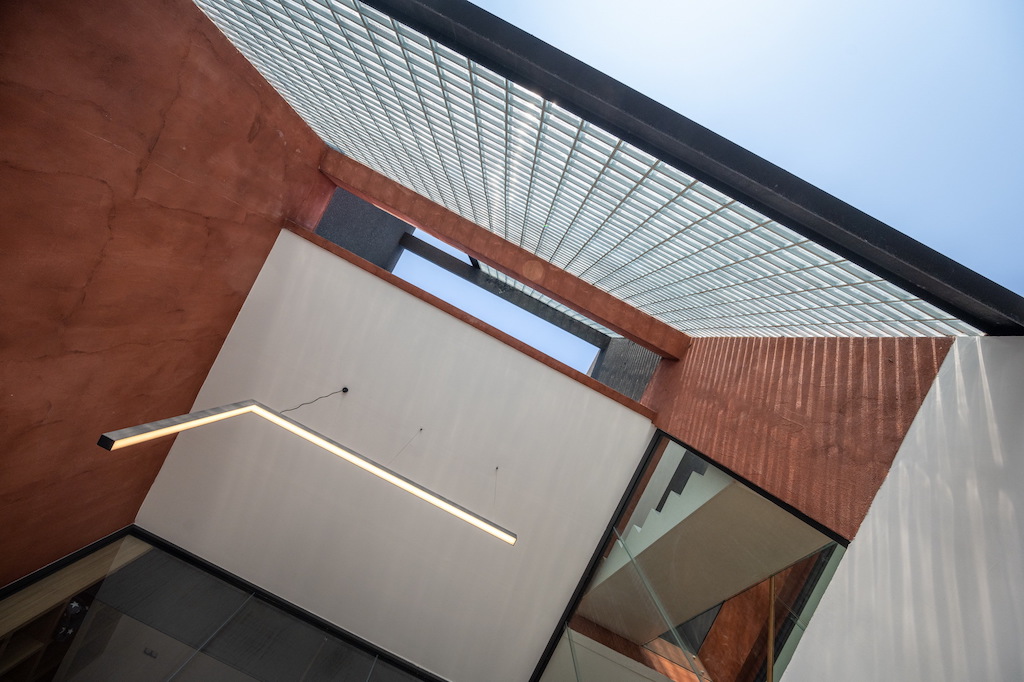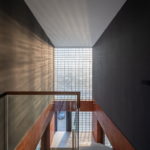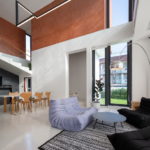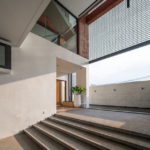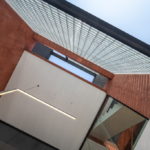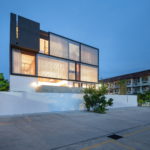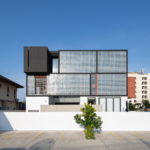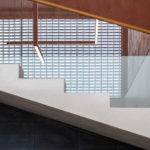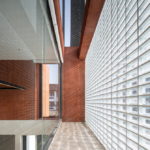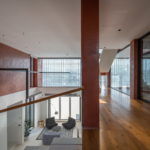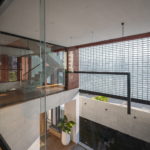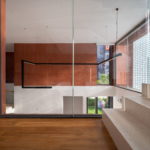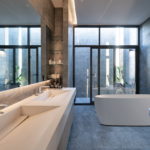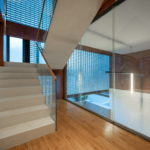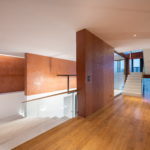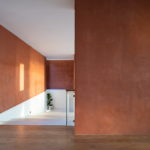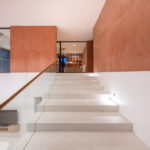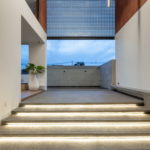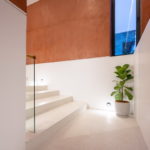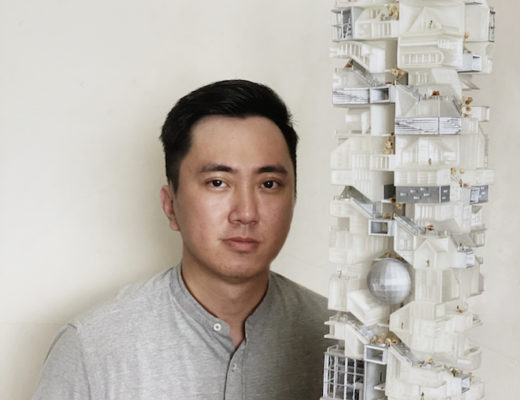Designed by Archimontage Design Fields Sophisticated, this 426m² Bangkok residence called the Sena House sited on a rectangular plot, is sandwiched between two narrow roads. The north side sits next to a two-storey house. The east side next to a small street is deep enough to be an entrance of a parking space. The south side is a high road and the west side is next to the courtyard. These physical components surrounding the plot are crowded buildings and, as it faces the high road, it also creates confrontational elements among each other.
The team of architects – Cherngchai Riawruangsangkul, Thanakit Wiriyasathit and Tanakul Chookorn – has created a contextual building defined by a variety of materials such as clay, stone and glass.
From the conditions of the space, the house is placed parallel to the length of the land, close to the north side, which is the deepest part of access and is used as an entrance from the road, leaving the other side, the front of the house, as much space as possible, in a form of a house lawn, to reduce the impact from the opposite building.
As a three-storey house, the ground floor is planned to let residents and visitors walk through a fish pond and a two-storey high hall that connects to the staircase and a living room above before entering the main door. The ground floor consists of a living room, a dining space, a pantry and a kitchen, all of which are embraced by an L-shape staircase rising up to the second floor. A certain angle of this set of stairs provides an open view and an extra-wide space to extend a journey, allowing the users to spend time to perceive the sense of space, a spacious atmosphere that covers two floors, spread over to other areas that they are about to arrive.
The second floor features a living room where the residents spend majority of their time. At this area, the glass block wall projects natural light from outside, different shades of light according to each period of day, creating the glimmering, colouring atmosphere and stories for the interior.
Through this glass block wall, the view seen from inside the house is made for perceiving time of day while, looking from outside, this element functions as a glass curtain. Apart from that, there is a laundry and washing area hidden behind at the back.
The third floor houses the three bedrooms. The walls facing outside of each bedroom are filtered with two-layer walls, that is, a glass block wall that continues from the second floor as an outer layer and a mirror wall that enhances the feeling of privacy as well as smoothing light from outside as an inner layer: a negotiating dialogue with the sun.
The three layers of the building surface are laid out differently, even it may seem unnecessary. The top layer is covered by fine black stone flakes and orange-brown clay that are smoothly blended in, gently handled, and woven together with the long strip clerestories that scatter throughout the large glass block wall. This, apart from functioning as an actual wall, is like a screen projecting life from outside to inside and from inside to outside, putting things together into one story, in the same context, a living together of different concepts.
See the full image gallery:
Photos: Rungkit Charoenwat
You might also like:
Semi-detached Bangkok house with pockets of greenery inside counters urbanisation

